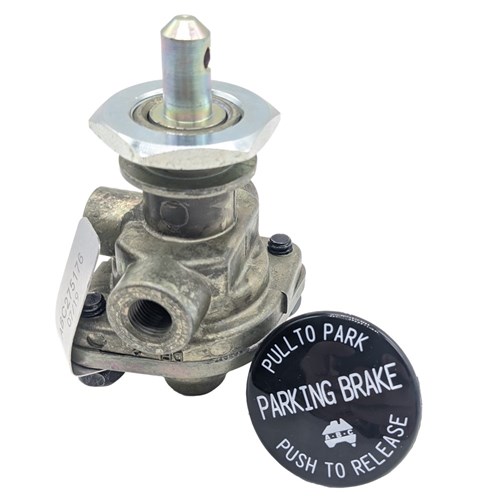Innovative Control Valves: Enhancing Precision and Dependability
Innovative Control Valves: Enhancing Precision and Dependability
Blog Article

Maximize Power Cost Savings and Comfort With Advanced Building Automation Controls
In the realm of contemporary architecture and facility monitoring, the integration of innovative structure automation manages stands as a crucial innovation. By utilizing the power of automation, structures can adjust, respond, and progress in means that were when unbelievable.
Energy Effectiveness Benefits
Power effectiveness advantages can dramatically reduce power intake and functional costs in structures. Energy-efficient systems, such as innovative building automation controls, can optimize the usage of sources like lights, air conditioning, and home heating, leading to reduced power costs over time.
Furthermore, enhanced energy performance can lengthen the life-span of structure equipment and systems. By operating a lot more successfully, heating and cooling systems, light, and various other structure parts experience less deterioration, resulting in minimized maintenance and substitute prices. Furthermore, energy-efficient structures usually command greater property values and rental prices, providing long-lasting financial advantages to owners.
Moreover, energy effectiveness can enhance passenger convenience and productivity. Appropriately managed indoor atmospheres with optimum lighting and thermal problems develop a more conducive and positive work space, causing improved worker fulfillment and performance. On the whole, the power effectiveness advantages associated with innovative structure automation controls are diverse, including expense financial savings, environmental stewardship, and passenger health.
Boosted Comfort Control
Enhancing comfort control in structure atmospheres needs an advanced integration of advanced automation systems for optimal resident well-being. By utilizing advanced structure automation controls, centers can tailor the indoor environment to meet the specific needs and preferences of occupants. These systems allow exact guideline of temperature level, ventilation, and illumination, creating a comfy and effective environment. Occupant satisfaction and efficiency are carefully linked to thermal comfort, making it necessary to have systems in position that can adjust to changing problems in real-time.
By including these advanced controls, structures can not only improve convenience but additionally improve power performance by enhancing system procedures based on real tenancy and use patterns. Eventually, focusing on owner convenience via advanced automation systems leads to a much more delightful and healthier indoor atmosphere.
Functional Effectiveness Improvements

In addition, the implementation of real-time monitoring and analytics tools enables structure operators to identify power ineffectiveness and operational anomalies immediately. By continuously keeping track of energy usage patterns and system performance metrics, adjustments can be made in real-time to maximize energy intake and ensure peak functional effectiveness. control valves. Additionally, including demand response strategies right into structure automation controls can additionally enhance operational performance by dynamically changing power usage based on grid problems and rates signals
Indoor Climate Optimization
Reliable indoor environment optimization is a fundamental facet of building automation controls, making certain owners' convenience and wellness while maximizing power savings. By making use of innovative sensing units and controls, constructing automation systems can constantly check and change temperature, moisture levels, air quality, and air flow to develop an optimal interior atmosphere. Keeping comfortable and consistent conditions not just enhances resident contentment yet additionally increases performance and overall well-being.
Indoor climate optimization additionally plays an essential function in power effectiveness. By fine-tuning home heating, ventilation, and cooling systems based upon real-time information and occupancy patterns, developing automation controls can substantially minimize power usage - control valves. Carrying out strategies such as demand-controlled air flow and thermal zoning can aid decrease power waste while making sure that each area of the structure gets the required conditioning.

Sustainable Environment Production
Building automation regulates not just optimize interior climate conditions for power efficiency and owner comfort yet additionally lay the foundation for producing a sustainable atmosphere via critical management of resources and systems. By integrating innovative building automation modern technologies, such as sensors, actuators, and smart software application, facilities can adjust and keep an click to find out more eye on energy usage in real-time to minimize waste and minimize their carbon impact. These systems enable anticipating maintenance, determining possible problems prior to they rise and maximizing equipment performance to boost long life and efficiency.
In addition, lasting atmosphere development expands past energy monitoring to include water conservation, waste reduction, page and indoor air high quality enhancement. Structure automation controls can manage water usage, spot leakages, and make sure correct waste disposal techniques, adding to total sustainability efforts. In addition, by regulating and monitoring air flow and purification systems, these innovations boost passenger wellness and performance while decreasing power intake linked with heating and cooling procedures.
Verdict
Finally, advanced building automation controls deal substantial advantages in terms of energy savings, comfort control, operational effectiveness, indoor environment optimization, and creating a lasting environment. By implementing these controls, buildings can accomplish ideal performance while lowering energy usage and boosting resident convenience. It appears that the usage of sophisticated automation modern technology is important in improving structure efficiency and creating a much more lasting future.
Energy efficiency benefits can substantially decrease power usage and functional expenses in structures. Generally, the power effectiveness benefits connected with advanced structure automation controls are multifaceted, including cost financial savings, environmental stewardship, and passenger well-being.
In addition, incorporating demand action techniques right into building automation controls can better boost functional performance by dynamically readjusting power use based on grid problems and rates signals.
Structure automation controls not just optimize indoor climate conditions for power performance and owner convenience yet additionally lay the structure for developing a lasting setting via strategic administration of systems and sources.In final thought, advanced structure automation controls offer considerable benefits view it now in terms of power financial savings, convenience control, operational efficiency, indoor climate optimization, and creating a lasting setting.
Report this page